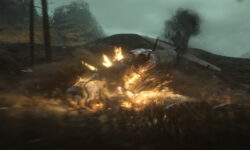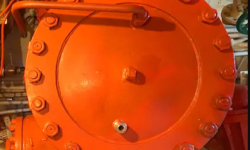Lighting and Shading for Film Production [CGMA, Frederic Durand, Group-Buy]
Release date:2024
Author:Frederic Durand
Skill level:Beginner
Language:English
Exercise files:Yes
This course provides an in-depth exploration of lighting, shading, and rendering techniques using Arnold for Maya, tailored specifically for feature film production. Students will begin by setting up a basic lighting scene and will learn about Direct vs. Indirect Illumination, various light types, and their applications. The curriculum covers advanced transmissive materials, including refraction, caustics, sub-surface scattering, and material mixing. Students will also practice compositing various elements, reconstructing lighting and shading in Nuke, and developing effective rendering strategies.
Week-by-Week Breakdown:
Week 1: Introduction and General Lighting and Shading
- Overview of Arnold for Maya and its competitors
- Integration with Maya and using the Arnold render view
- Simple scene lighting and shading demonstrations
- Understanding direct and indirect illumination (Global Illumination)
- Overview of materials and linear workflow
- Rendering settings, including 32-bit EXR single and multi-channel outputs
Week 2: Rendering Procedures
- Camera and render settings, including aspect ratios
- Concepts of color management and linear workflow
- Pixel depth: 32-bit vs. 8-bit
- Render etiquette and naming conventions
- Working with EXR multi-channels, layers, and AOVs
- Compositing layers and AOVs in Photoshop
Week 3: Light Sources Typology Part 1
- Theories of light quality: large vs. small lights
- Soft and hard lighting distinctions
- Natural lighting sources: sun and directional light, sky and Skydome
- Artificial lighting techniques: spotlights, gobos, and photometric lighting
- Exploring light emission and self-illumination
Week 4: Light Sources Typology Part 2 and Designations
- Area lights and outdoor illumination techniques
- Light linking and indoor illumination strategies
- The three-point lighting technique: key light, fill light, and rim light
- Per-light rendering and compositing methods
Week 5: Material Descriptions and Surfacing
- Fundamentals of shading
- Constructing AiStandardSurface materials
- Understanding diffuse components, reflections, and specular highlights
- Surface alterations: bump, normals, and displacement maps
- Exploring opacity, transparency, refractions, and caustics
- Emitting light materials, translucence, and sub-surface scattering
- Mixing materials using blend and additive modes
Week 6: Rendering and Compositing
- Creating models with quality subdivisions
- Techniques for ambient occlusion and curvature
- Working with mattes and material IDs
- Introduction to Nuke compositing and “pre-light” rendering
- Beauty deconstruction and reconstruction in Nuke
- Utilizing mattes and stencil masks, along with depth of field strategies for both 3D and 2D
- Addressing typical premultiplication issues and using cinematic look-up tables with Arnold and Nuke



![Lighting and Shading for Film Production [CGMA, Frederic Durand, Group-Buy] img](https://online-courses.club/wp-content/uploads/2024/10/Lighting-and-Shading-for-Film-Production-CGMA-Frederic-Durand-Group-Buy-864x450.jpeg)

 Channel
Channel





